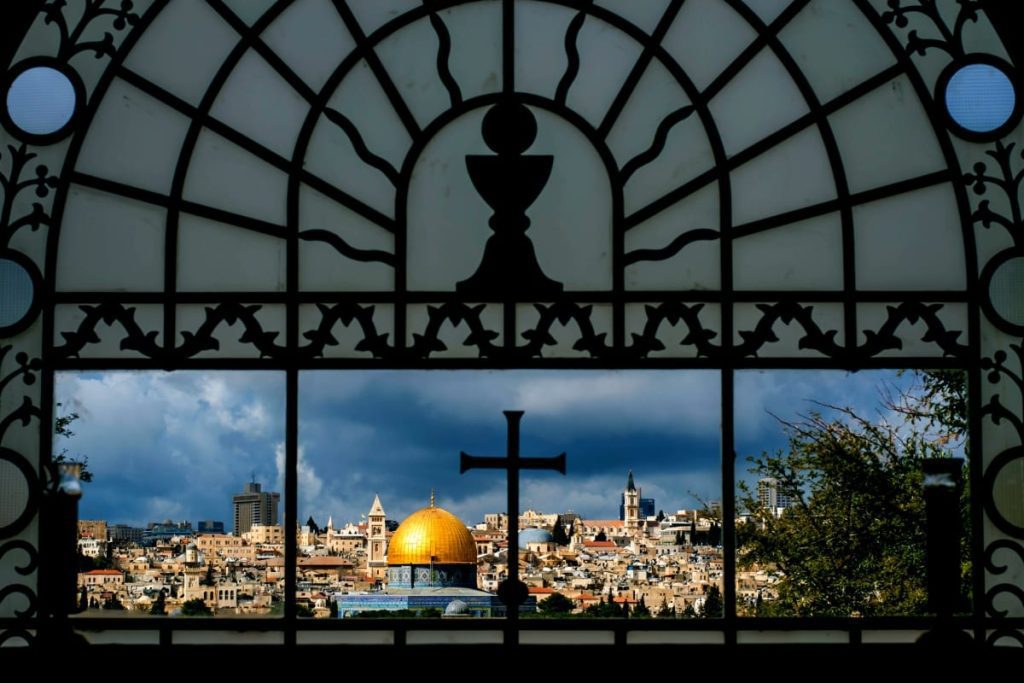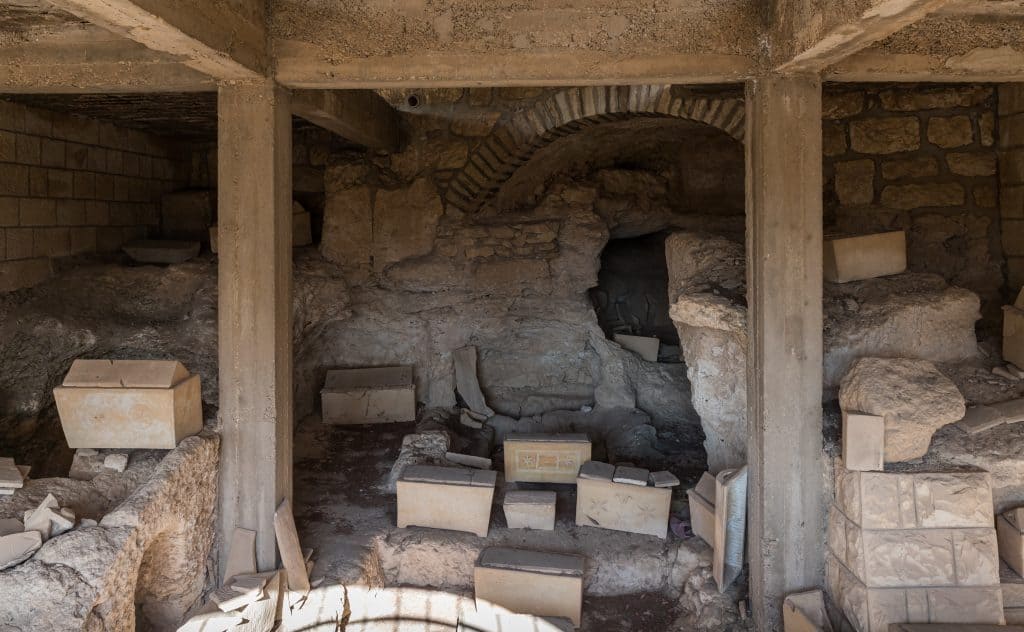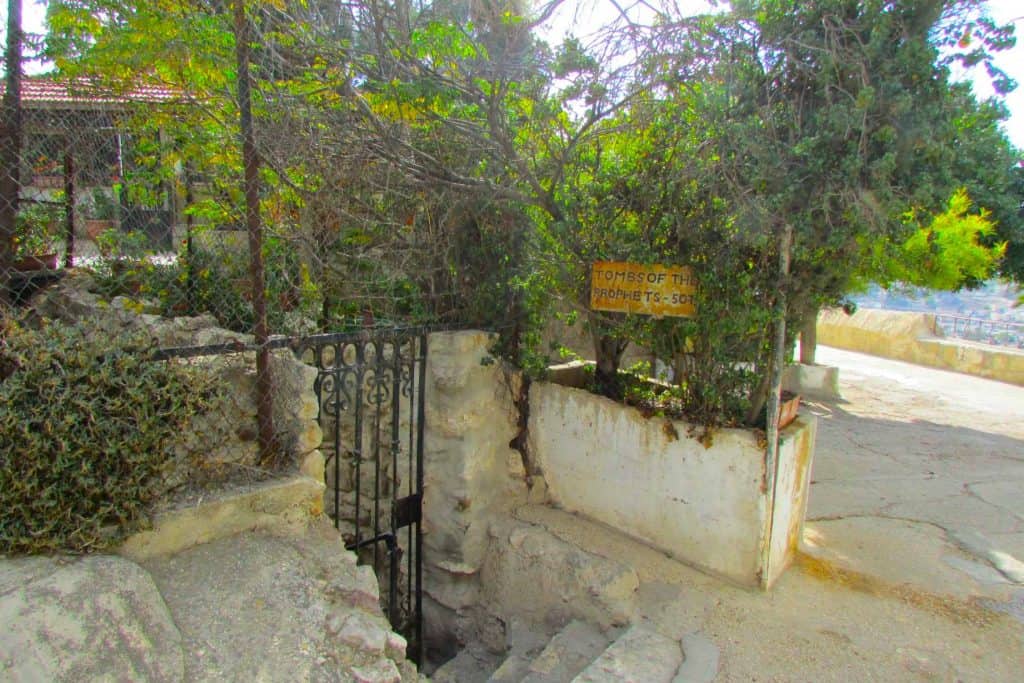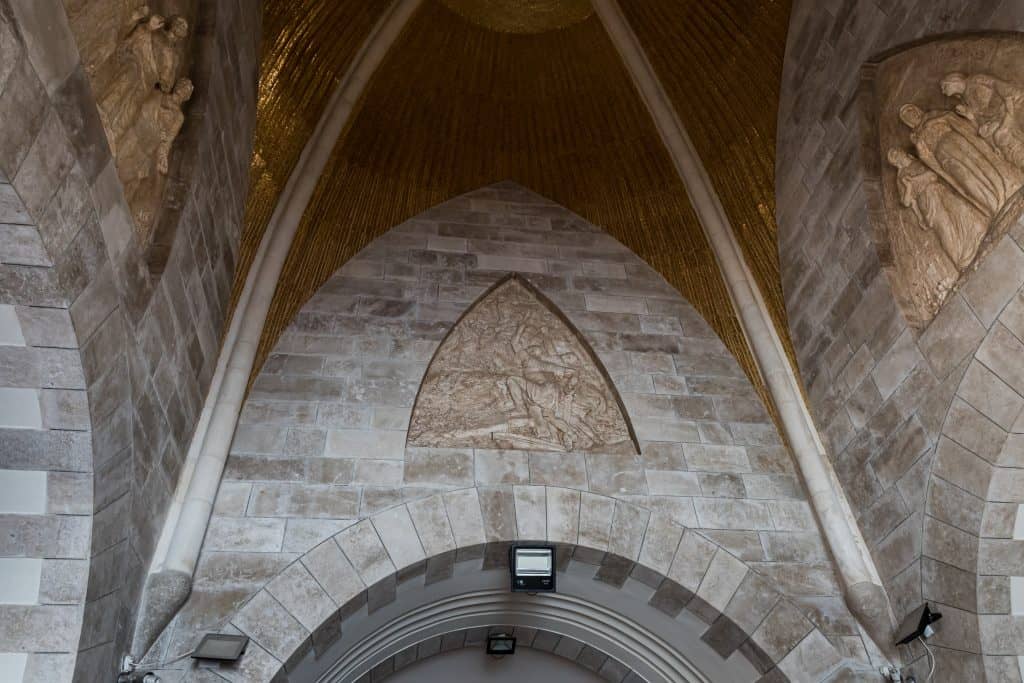Dominus Flevit is a Roman Catholic church on the Mount of Olives, opposite the walls of the Old City of Jerusalem. During the construction of the sanctuary, archaeologists uncovered artifacts dating back to the Canaanite period, as well as tombs from the Second Temple and Byzantine eras. According to the 19th chapter of the Gospel of Luke, Jesus, while riding toward the city of Jerusalem, becomes overwhelmed by the beauty of the Second Temple and predicting its future destruction, and the diaspora of the Jewish people weeps openly (an event known as Flevit super illam in Latin). (Luke 19:37–42)

The History of the Church
The current Dominus Flevit Church is built upon the foundations of an earlier Byzantine church, which, like most churches, faced east. It was during the Crusader era that people began commemorating the location. After the fall of Jerusalem in 1187, the church fell into ruin. In the early sixteenth century, a mosque or madrasah existed at the site, presumably built by the Turks, from the remains of the earlier church, although the exact use is disputed. This place was known as el Mansouriyeh (The Triumphant) and el Khelweh (The Hermitage).
Archaeology Found in the Dominus Flevit Church
So a Canaanite tomb from the Late Bronze Age and a cemetery from 136 BCE to 300 CE were discovered. The necropolis spanned two separate periods, characterized by differing tomb styles. First, the earlier Second Temple era tombs were of the Rock-cut tomb style; while the Byzantine era section was composed of tombs with arcosolium from the 3rd and 4th centuries CE. A Byzantine monastery from the 5th century was also discovered. Mosaics from this monastery remain at the site.

The Byzantine mosaic floor dates to the beginning of the seventh century CE. Ribbons and wave motifs surround the floor. The center of the carpet is divided by squares containing round frames. The circles include fruit, vegetables, flowers, and fish. The Byzantine mosaic attests to the importance of agriculture for the people of the period.
Tombs of the Prophets

Credit: CC BY-SA 4.0 Wikipedia – Yaakov
Furthermore, the motifs reflect Byzantine Palestine’s developed and progressive agriculture, including Jerusalem. Some images also contain unique elements, for instance, luffa for the production of bathing sponges, edible Snakes Melons, and figs tied by a blue string. Parts of the Byzantine mosaic can also be seen inside the modern church building, with a limestone slab bearing a large cross in the middle.

Located on the western slope of the Mount of Olives, the church was designed and constructed between 1953 and 1955 by the Italian architect Antonio Barluzzi and is held in trust by the Franciscan Custody of the Holy Land. Dominus Flevit, which translates from Latin as “The Lord Wept,” was fashioned in the shape of a teardrop to symbolize the tears of Christ.

